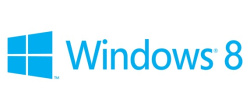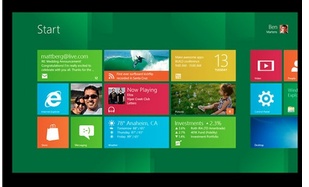
Opening Windows 8: A Tale of 2 Start menus
 So you've decided to use Windows 8. Maybe you wanted to take advantage of the unusually low upgrade price, maybe you just bought a new computer, or perhaps you're just trying it out to see if you like it. Whatever your reasons there's a very good chance either you have already added a Start menu of some kind, are considering adding a Start menu, or are in the process of evaluating your options for adding a Start menu.
So you've decided to use Windows 8. Maybe you wanted to take advantage of the unusually low upgrade price, maybe you just bought a new computer, or perhaps you're just trying it out to see if you like it. Whatever your reasons there's a very good chance either you have already added a Start menu of some kind, are considering adding a Start menu, or are in the process of evaluating your options for adding a Start menu.
Strictly speaking a Start menu isn't necessary in Windows 8. Everything that was available on the Start menu in Windows 7 can be found elsewhere in Windows 8. Sometimes it's even much more convenient aside from a moderate learning curve. On the other hand even people (like me) who already saw the Start menu as dated & in need of an overhaul may find Microsoft's alternatives unacceptably weak & poorly designed. In fact while Microsoft changes the Start menu with each new version of Windows if anything it seems to have gone downhill in Windows 7 before disappearing entirely in Windows 8.
For whatever weaknesses it may have, the Start menu has been arguably one of just three or four elements which have defined the Windows desktop interface since 1995. In fact you can usually identify the exact version of Windows a computer is running by simply examining the Start menu's appearance. For more than a decade it expanded both figuratively and literally to the point where you could access nearly every setting or feature in Windows from its confines. That expansion had all but stopped in Windows 7, and in fact some people would argue that Start menu was a step backwards.

 You may not realize that Microsoft has actually been a proponent of the tablet PC for more than a decade. In fact as early as 2002 they were releasing a tablet PC version of Windows. For numerous reasons previous generations of the Windows tablet PC simply didn't work for most people. The interface wasn't particularly tablet friendly, the operating system was too power hungry, and PC hardware really wasn't suitable in a variety of ways.
You may not realize that Microsoft has actually been a proponent of the tablet PC for more than a decade. In fact as early as 2002 they were releasing a tablet PC version of Windows. For numerous reasons previous generations of the Windows tablet PC simply didn't work for most people. The interface wasn't particularly tablet friendly, the operating system was too power hungry, and PC hardware really wasn't suitable in a variety of ways.







